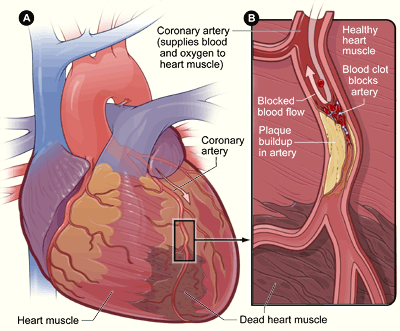 We all know that being overweight is probably not good for our health. It seems to make intuitive sense and there is ample scientific data that says losing weight is good for you in the long run. But there are many uncertainties. One of the unanswered questions is how best to measure body fat and how best to correlate being overweight with long-term disease.
We all know that being overweight is probably not good for our health. It seems to make intuitive sense and there is ample scientific data that says losing weight is good for you in the long run. But there are many uncertainties. One of the unanswered questions is how best to measure body fat and how best to correlate being overweight with long-term disease.
This past week there was a big study published out of Europe that tried to address these issues. In this post I’m going to break it down for you and see if there is anything we can learn from this study. As always, it is important to note that this is just one observational study, which means that it simply looks at a large population of people and attempts to observe a specific medical outcome (in this case, heart disease) with a specific condition (in this case being overweight). It can’t prove cause and effect!
Consider this post a “mini-Medical School” in which I’ll walk you through a medical research study. It may get a bit nerdy. Here we go.
The study: connecting weight to heart disease
The study is entitled “The impact of confounding on the associations of different adiposity measures with the incidence of cardiovascular disease: a cohort study of 296 535 adults of white European descent,” a title which probably won’t fit on the theater marquis when the movie version is released.
Read the full journal article here.
A couple quick comments just based on the outrageous title of the study. First, adiposity measures is a jargon-infused way of saying measuring body fat. Second, the study attempts to find a link between adiposity and cardiovascular disease (mostly heart attacks). Third, it is a really big study of nearly 300,000 people which is a whole lot in medical research. Fourth, and this is a huge limitation of the study, it mainly looked at white Europeans.
As an aside, any study that looks at one group (white Europeans) has immediate troubles with generalizability. Just because something may be true for white Europeans does not automatically mean it is also true for black Africans or Native people or poor white folks from Appalachia or anybody who isn’t of white European descent. This has long been a problem with medical research over the past 100 years.
Measuring body fat
The researchers looked at five ways to measure body fat:
- Body-mass index (BMI), which is a relationship based on body surface area. You need to know your height and weight to calculate BMI. Each and every person reading this should calculate your BMI here.
The next four rely on measurements other than weight to determine body fat.
- Waist circumference. A simple measure of waistline. Get out a tape measure and check right above the belly button.
- Waist-to-to hip ratio. An “apple” shaped person (with body fat concentrated in the belly) is thought to be worse than a “pear” shaped person (with body fat more in the hips). “Apples” have a higher waist-to-hip ratio than do “pear” body shapes. The stereotypical image is of a man with a beer gut (apple) as compared to a woman with larger hips (pear). Lower is better for this measurement. Learn how to find and interpret your waist-to-hip ratio here. In general, women want the WHR < 0.8 and men < 0.9.
- Waist-to-height ratio. In all honesty I have never once considered this way of measurement in my medical practice.
- Percent body fat. You can get this measured or calculated. It is a bit of a hassle but if you are curious, here is one site to try.
I really tried to find good online resources to demonstrate how best to do these measurements. Most are pretty bad and are geared toward body image in ways that trouble me: Look sexy! Get thin! Have a skinny waist and look your best! All these videos do is promote unhealthy body image in people. Yuck.
The best that I could find was from a reputable fitness training organization called the American Council on Exercise or ACE. I have included their video below because it is high-quality, oriented toward health and not just attractiveness, and accurate. I want to emphasize, however, that research is mixed on which methods of measurement are best to determine health.
What does this mean for me?
OK, we’ve measured body fat. What does this study teach us? Here are four lessons:
Increasing body fat has a detrimental (bad) effect on heart disease risk.
Regardless of what measurement is used, heart disease risk goes up with higher body fat. This was true for all five measurement techniques. That is the main conclusion you should know.
A BMI in the low-normal range appeared to be best for heart disease risk, with a huge caveat.
The sweet spot for BMI appears to be 22-23 which is smack dab in the middle of the normal 20-25 range. Higher BMI = higher heart disease risk.
But the study also showed that lower BMI also was associated with higher heart disease risk. We call this a “J-curve” relationship because when you plot heart disease on the y-axis and BMI on the x-axis, the curve looks J-shaped. That suggests that it is possible to be too thin.
Huge caveat: read next item.
The J-curve relationship largely goes away when other risk factors are considered.
An interesting finding was that when BMI is used, it appeared possible to have too little body fat. You can actually be too thin? Huh?
Think of it this way: If it is really true that skinnier people also have higher heart disease risk, then it is reasonable to conclude that being a bit overweight may actually be helpful. No. These researchers found that it may be that thinner people also have other heart disease risks – especially smoking – which makes them skinny but which also makes them less healthy.
In other words, it is not being skinny (low BMI) that leads to higher heart disease. It is rather than other bad things are causing people to be thinner. Being thin is probably good. Smoking to get thin is not.
The commonly-held idea that overweight people are somehow protected from heart disease risk is likely not true.
There is a widely-discussed situation called the obesity paradox. This paradox claimed that there is actually something about being overweight that may actually be good for you. This current study refutes that. There is probably no protective effect on your heart for being overweight. All the measurements (waist size, waist-to-hip ratio, total body fat, even BMI when you take away the confounding factors) say that higher weight = less healthy.
Take-home points
When we teach medicine to people in the medical field, we like to summarize the “take-home” or “learning” points. These medical studies are so complex that we can lose sight of what is important.
Here’s my own “take-home” points from this study.
- Lower is better. In general, the more weight you are carrying, the more your risk of heart disease.
- Don’t worry about your body shape. Although central obesity (apple shaped body) is probably worse than other body types, this is perhaps not the place to put your energy. Don’t worry about if you are apple-shaped, pear-shaped, or shaped like any other piece of fruit. Focus on overall health in diet and exercise instead.
- Factors other than weight are important at reducing risk of heart disease. Frankly, being overweight probably doesn’t matter a whole lot if you eat fast food every week. Or if you smoke. Or if your blood pressure is really high. Or if you have really high cholesterol. Weight matters, but all these other factors matter just as much if not more.
I guess it’s time to buy some kale and hit the gym.
That’s all! Please subscribe by e-mail if you like what you see and follow me on Twitter @DrDavidHilden.
Next Healthy Matters radio broadcast, on Sunday, March 25, will be an Open Lines show. Why don’t you try streaming the show LIVE at 7:30 Central on WCCO.COM. It’s easy! Listen to podcasts of previous shows here on your own time and without commercial breaks!


